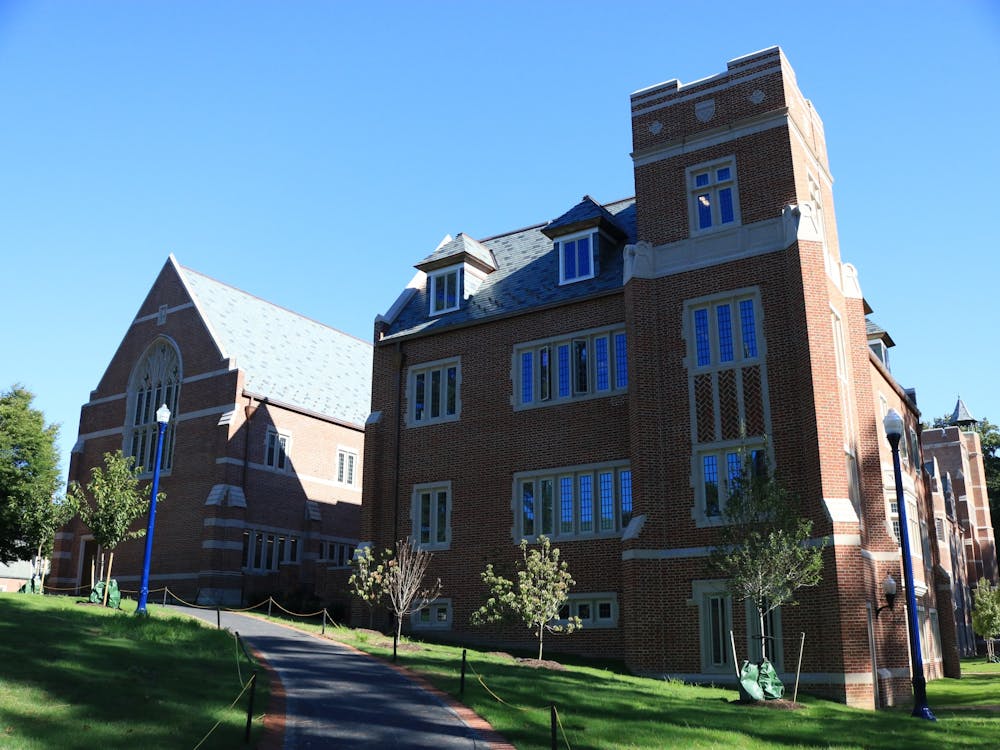In one of the labs in Gottwald Science Center lies a bacterium that kills nearly a million people every year.
Taking on that bacterium is Prof. Laura Runyen-Janecky and a team of research students. Funded by National Institute of Health grants, they are looking to understand what makes Shigella effective at causing infection, which may lead to controlling the spread of the disease and other infectious bacterium that work like Shigella.
Junior Jordan Walter began working with Runyen-Jancecky last summer.
"I was looking for a lab whose research related to health," Walter said. "And this infectious disease is a big problem in third-world countries, infecting millions of people because of contaminated water supplies."
Shigella is one of a handful of infectious diseases that largely affect third-world countries and mostly children, who can die easily from dehydration from diahrrea and overheating. Contaminated water supplies are the source of spreading of Shigella, as with other infectious diseases in third-world countries.
What makes Shigella different from other infectious diseases it that it has a very low infectious dose, said Runyen-Janecky. To be infected by Salmonella, a person must ingest about a million Salmonella bacteria; to be infected by Shigella, a person needs only to ingest 10 to 100 bacteria.
Once infected, the bacterium makes its way into the cells of the lining of the colon. They find homes in the human cells, replicate in those cells and then burst open to infect more while moving on to the intestine. This causes fever, cramps and diahrrea.
"We are looking at a gene expression in Shigella when it gets inside human cells," senior Aaron Daughtery said. "The better understanding you have of that, the more opportunities you have to design drugs, preventative measure, treatments."
Daughtrey, Walter and three other students have been exploring which of the bacterium's genese leads to "invasion capability."
First, research students isolate a gene to "knock out" to create a "mutant" version of Shigella. This process can take weeks, Walter said. After the mutant is successfully created, they then test the mutant cells reaction once inside a eukaryotic cell, or a human cell.
If the mutant cell compares poorly to the "wild" Shigella, it's a good sign they are on the right track because they have identified a gene that leads to infection. Research students have tested a number of genes to see which ones contribute to Shigella's success in infecting a human cell to spread to the rest of the body. This information will not only be valuable in the prevention and treatment of Shigella.
"When you learn about one bacterium, you can learn about another bacterium and how it works, " Daughtery said.
Enjoy what you're reading?
Signup for our newsletter
Daughtery has been doing research with Shigella since the second semester of his freshman year.
Daughtery had his research published in January along with four other students were able to look at how genes are turned on and off when under certain stress conditions such as oxidative stress. Though he's been published, he continues to do research in the lab.
Runyen-Janecky has been doing research with Shigella since 1996 during her post-doctoral fellowship. There is one trait about the bacterium that drew her in to study it.
"The bacterium, when it causes disease, it doesn't just go in your body," she said. "It actually lives in the cells of your bodies. It is an organism that lives in the cells of another organism. ... It's generally not the norm."
More than 50 percent of pathogens are extracellular, Runyen-Janecky said, meaning the bacteria do not live inside the cell. More and more scientists are finding that more bacteria are intracellular than they once thought, she said.
"Shigella is not a public health problem in the United States," Runyen-Janecky said. "But, our government thinks it's important because living in a global world, our government is interested in public health world-wide. It's a global responsibility."
Within the United States, however, there may lurk another bacterium that operates like Shigella, she said. The more the government knows about how to treat and prevent the infectious bacteria, the more the government may be prepared if something similar strikes the U.S. population.
Contact staff writer Megan Wilson at megan.wilson@richmond.edu
Support independent student media
You can make a tax-deductible donation by clicking the button below, which takes you to our secure PayPal account. The page is set up to receive contributions in whatever amount you designate. We look forward to using the money we raise to further our mission of providing honest and accurate information to students, faculty, staff, alumni and others in the general public.
Donate Now


